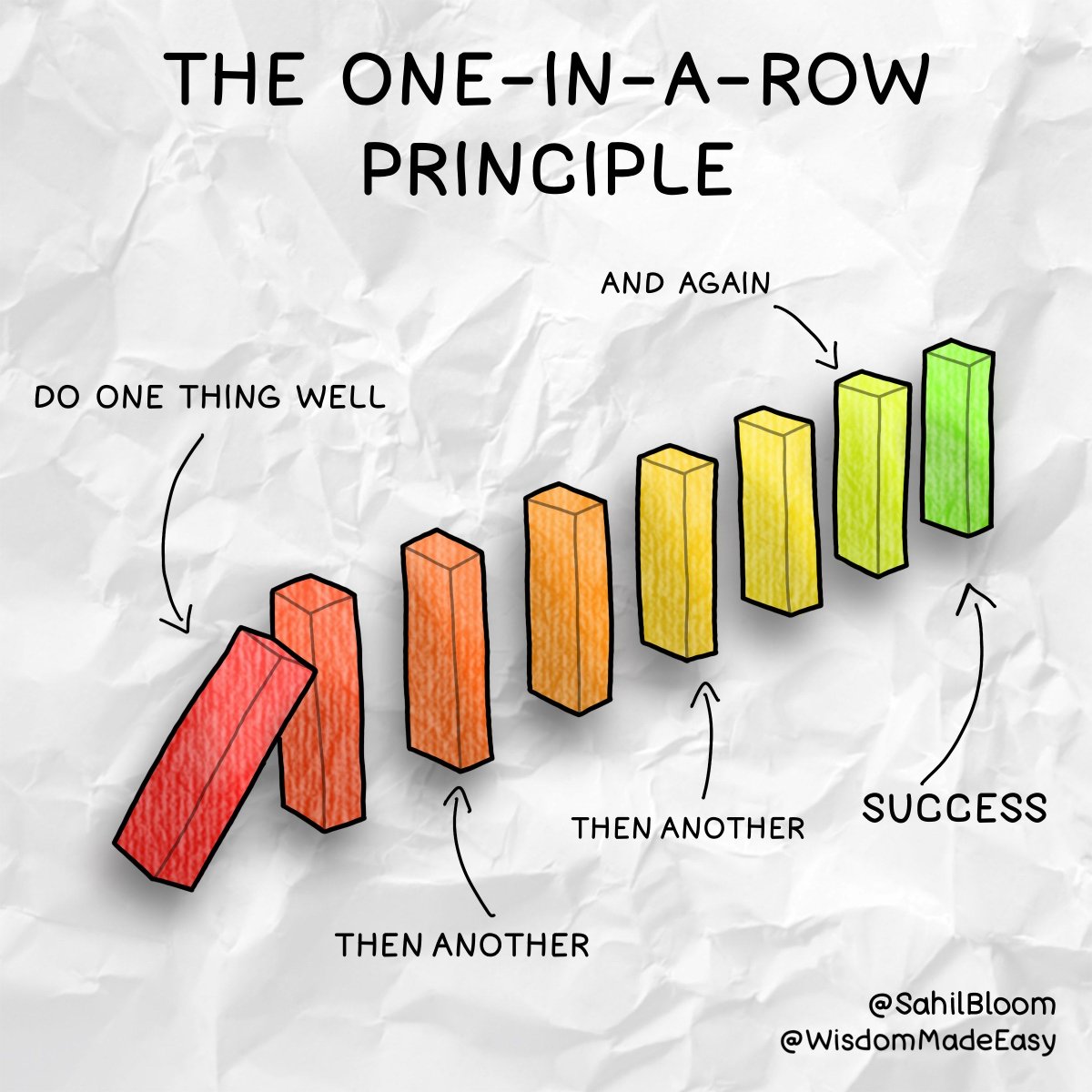
The Feynman Technique for learning anything:
Step 1: Identify a topic
Step 2: Explain it to a 5-year-old
Step 3: Study to fill in knowledge gaps
Step 4: Organize, convey, and review
True genius is the ability to simplify, not complicate.
Simple is beautiful.
Step 1: Identify a topic
Step 2: Explain it to a 5-year-old
Step 3: Study to fill in knowledge gaps
Step 4: Organize, convey, and review
True genius is the ability to simplify, not complicate.
Simple is beautiful.

The more generalized way that I apply this approach:
• Learn something new.
• Try to teach it to a friend/family member who doesn’t know anything about the topic.
• Log the questions they ask that I don’t know the answers to (or where I stumbled).
• Study more to fill in.
• Learn something new.
• Try to teach it to a friend/family member who doesn’t know anything about the topic.
• Log the questions they ask that I don’t know the answers to (or where I stumbled).
• Study more to fill in.
The inverse is also a useful heuristic:
Complexity and jargon are often used to mask a lack of deep understanding.
If someone uses a lot of complexity to explain something, they probably don’t understand it.
If you can’t explain it to a 5-year-old, you don’t understand it.
Complexity and jargon are often used to mask a lack of deep understanding.
If someone uses a lot of complexity to explain something, they probably don’t understand it.
If you can’t explain it to a 5-year-old, you don’t understand it.

In the 1960s, the National Training Laboratories Institute developed a pyramid model to represent the retention rate of information from various activities.
The general takeaways:
• Lecture/reading are not enough
• Teaching is the most powerful form of learning
The general takeaways:
• Lecture/reading are not enough
• Teaching is the most powerful form of learning

I wrote about the learning pyramid and my generalized approach to learning new material in a recent newsletter piece.
You can read it (and join 250K+ others who received it) here. sahilbloom.com/newsletter/the…
You can read it (and join 250K+ others who received it) here. sahilbloom.com/newsletter/the…
One unlock for me:
Form a "learning group" with a few others.
This is a group of friends that all have a shared interest in learning and growth. You can have a regular cadence of meetings or impromptu discussions where people share new learnings on a topic of choice.
Form a "learning group" with a few others.
This is a group of friends that all have a shared interest in learning and growth. You can have a regular cadence of meetings or impromptu discussions where people share new learnings on a topic of choice.
• • •
Missing some Tweet in this thread? You can try to
force a refresh









